Muslims have a long history in Britain. However, in the 20th century, many political changes occurred: the Ottoman Caliphate was divided into different countries, and United India was divided into two separate states. With these changes, the number of Muslim immigrants in Britain increased. The construction of mosques, establishment of Islamic schools, and organization of other Islamic rituals and customs began. Different methods for announcing the crescent of the new Islamic month were adopted by Muslims. Some countries started organizing the month of Ramadan and Eid following Morocco's announcement, while others followed Saudi Arabia's announcement. Some scholars even developed their own formulas. Consequently, Muslims in Britain began to have disagreements and disunity on the issue of the crescent moon, leading to the celebration of Eid on different days among various mosques. There exists a long list of services, various meetings, and formulas by Islamic scholars in Britain regarding the Hilal. Nonetheless, some significant agreements and formulas of British religious scholars can be observed as well.
Bradford Agreement - April 24, 1993
On April 24, 1993, the head of the Central Jamiat Tabligh-e-Islam, Hazrat Allama Pir Syed Maruf Hussain Nowshahi (may he have a long life), submitted his Istifta (question) regarding the sighting of Hilal to the Grand Mufti of Great Britain, the esteemed teacher of Ulama Mufti Saifur Rehman Hazarvi (may God bless and grant him peace). Mufti Saif Ur-Rahman Hazaravi (may Allah bless and grant him peace) responded that one should first attempt to sight the moon or complete 30 days. If both options are not feasible, then decide the start of the crescent moon through astronomical calculations.
Question sent by Pir Sayyad Maroof Hussain Noshahi
Answered by Mufti Saif ul Rehman Hazarvi ( signatures of scholars can be seen)
Rochdale Agreement - December 1993
In December 1993, scholars in Great Britain, after discussions, decided that if the observatory confirms the sighting of the new moon crescent, the next Islamic month would be announced the following day. The significance of this agreement was the decision to declare the crescent moon based on scientific observations. However, the agreement should have specified which country would be followed. It does not include terms like witnesses, news, or Istifadha (widely spread news that cannot be falsified).

The agreement of Rochdale 1993.Scholar signatures can be seen
Birmingham Agreement of November 13, 2005
On November 13, 2005, esteemed British scholars signed a new agreement and formula for announcing the crescent.
1. According to this agreement, Islamic months will commence when there is a possibility of the crescent being visible on the horizon of Morocco, as per observatory reports.
2. If the religious ministry of Morocco refrains from announcing the crescent despite its potential visibility, the announcement will be made following Sharia testimony and reports from other countries. The new Islamic months will commence with the possibility of the crescent being visible on Morocco's horizon.
While many prominent scholars were mentioned in this agreement, it primarily relies on observatories. However, designating Morocco as the only horizon for crescent moon sightings has led to confusion and disunity within the Muslim community of the sub-continent. This agreement contradicts the teachings of Imam Azam Abu Hanifa, Imam Malik, Imam Ahmed Bin Hanbal, and Imam Ahmed Ridha Khan Bralvi (May Allah be pleased with them) who followed global moonsighting. It is also incongruent with the teachings of Imam Shafaee. The 2005 Ijtihad has heightened dissent and promoted an inaccurately assumed theory of moon sighting.
Birmingham agreement
November 2005
Scholar signatures can be seen
Birmingham Agreement 2017
On August 19, 2017, the Ulema of the UK signed another agreement with a new formula for determining the crescent.
1. Scholars of the Hanafi school of practice agree that differences in moon sighting horizons are valid only if there is a significant or excessive distance not caused by the variation of day and night.
2. According to the observatory, the crescent's visibility in a country is confirmed by a respected board of Ahl-e-Sunnah scholars or Fatwa authority. Subsequently, the crescent's sighting in Great Britain will be announced based on the country's scholars' proclamation.
3. It is essential to note that those reporting sightings of the crescent must hold Sunni beliefs.
4. The Moonsighting Board will be responsible for announcing the crescent.
5. Reports of the crescent must be received by the end of Isha prayer. If received after Isha, thirty days of the month will be completed.
The significant merit of this 2019 agreement is its acceptance of crescent sightings globally. However, the primary drawback lies in the requirement that individuals reporting the crescent's visibility must adhere to the correct Sunni Aq'ida. This condition is impractical when receiving information from various parts of the world. All jurists agree that fasting becomes obligatory upon receiving evidence of the crescent's visibility before Suhoor the next day. If residents of a country miss fasting due to not witnessing the crescent but later authenticate its visibility, they must make up for the missed day with Qadah fasting. Thus, these dilemmas stemming from the constraint and formula present challenges within the agreement.
Birmingham agreement
August 2019
The formula of the UK and Europe Hilal Forum
The UK and Europe Hilal Forum concluded on a formula for determining the crescent of the new Islamic month, using guidance from the fundamental principles of the Quran, Sunnah, and Islamic jurists. This formula also considered past formulae and agreements. The criteria for this new formula were finalized after seven years of research.
1- According to the majority of Hanafi, Maliki, and Hanbali Islamic jurists, the difference in horizons for moon sightings is not valid unless there is a significant or excessive distance, not caused by the difference between day and night. Therefore, in Asia, Europe, Africa, and America, the observatory's report of the crescent moon's visibility will be accepted.
2- The announcement of the crescent will be made from the observatory, and in this case, data from the British observatory will be used. The observatory has six codes for the visibility and invisibility of the crescent: A, B, C, D, E, and F. If the visibility code of the crescent is A to C, the following day will mark the beginning of a new month.
3- The UK and Europe Hilal Forum will announce the crescent based on observatory reports. The exact date of the announcement is made a year in advance. However, as a reminder, spokespersons from the UK and Europe Hilal Forum will announce every month.
 THE UK AND EUROPE HILAL FORUM
THE UK AND EUROPE HILAL FORUM



Add new comment